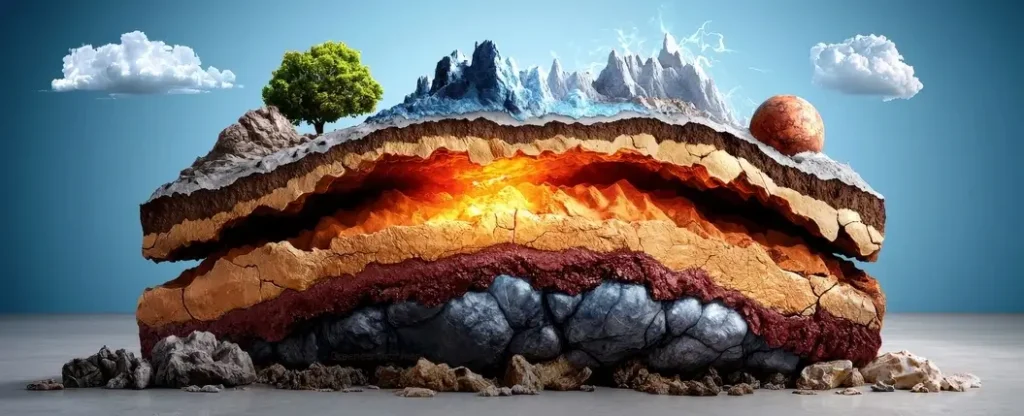Introduction: Today we explain What are natural changes. Natural changes are various changes that take place without any interference by man or any external force. These bring about changes in the environment, weather, living organisms, and other systems that are existing.
Natural change can be gradual such as the formation of mariners or cruz or sudden such as the formation of the mountain or the earthquakes. These changes enable one to understand the changes in nature. In this guide, different kinds of natural changes, their causes, and their impacts on the earth are described.
Types of Natural Changes
1. Geological Changes

There are movements that are evident on the surface of the earth which happen as geological transformations. In geology these are; These are earthquakes, volcanic activities, and the process of erosion among others. They are caused by the movement of tectonic plates that are abundantly found on the surface of the earth.
Volcanoes form when molten rock emerges on the surface of Earth. Weathering is the process through which rocks and landforms are broken down to the wind, water, and ice. These changes affect both form features of a landscape and its ecosystems. They can be vices at times, yet they help in the formation of the land masses.
2. Climatic Changes

Climate normally fluctuates because of altering temperature, precipitation, and other aspects of the atmosphere. They include the periods when Greenland was an area of greenness, occurrence of drought, and monsoon. Ice ages are characterized by cooler temperatures in the entire globe or any geographical region in this world.
Droughts refer to a condition where there is a reduced rainfall period for an unreasonably long period of time. While others indicate that monsoons are seasonal rainfall that affects certain areas. These changes effects include those related to agriculture, water, and wildlife. Natural factors like ocean currents and solar radiation influence climate variations.
3. Biological Changes

All living organisms experience some biological transformations as they grow over time. What are natural changes? From the biological perspective, they include evolution, migration as well as adaptation. Evolution entails change that occurs in the various generations of species over periods of time.
This can be explained by the fact that migration is an action people take in a bid to improve on their lifestyle through the acquisition of resources such as food. This paper aims to discuss adaptation that allows organisms to live in new environments.
These changes make sure there is adequate balance in the supply of species and other living organisms in the ecosystem. They are very indispensable for the existence of various species in the world.
4. Environmental Changes

Natural change happens when the climate affects certain sections of land such as fires, floods, or landslides. Under the dynamic of environmental changes people alter the geographical features and in return, the living features alter them.
Lightning or heat-caused fires help in the removal of old growth and start the growth of new ones. It begins over warm sea and they are associated with wind and storm.
A landslide refers to a movement of soil and rocks down other slopes which is caused by the force of gravity. These events are potentially disastrous for the species living in a particular ecosystem, but they also contribute to process of the ecosystem renewal.
Causes of Natural Changes
1. Earth’s Movements
There are a lot of changes that occur due to the earth’s movements to and fro in other aspects. What are natural changes? This has led to such forces as tectonic, earthquakes, and volcanic eruptions. The tectonic plates keep shifting to and fro which results in quakes and/ or eruptions.
They form mountains, valleys, and ocean trenches as they go on with the rotation process or exercise. In this process, they create certain features of Earth’s crust and affect some natural environments for millions of years.
2. Weather Patterns
Climate conditions are responsible for most of the natural variations in the environment. Weather changes involve such things as storms, heat the heat and change of seasons.
Also, storms originate as a result of interaction between two air masses. Heatwaves are understood as a phenomenon, where temperature is regularly high for an elongated time. Seasonal changes mean that it becomes different from one season to another of the year. These changes impact plant development, animal behavior, and also on human errands.
3. Natural Disasters
Natural disasters are sudden occurrences that bring about some changes within the natural environment. What are natural changes? Some of the natural calamities are floods, tsunamis, and tornadoes. Floods in the cases mentioned above occur as a result of water flooding rivers which have been filled to capacity by the surprise rainy events.
They are commonly caused by undersea earthquakes or volcanic eruptions This is a special kind of wave that is caused by sea quakes. Tornadoes originate from vigorous winds Since tornadoes are a product of wind vorticity they originate from powerful wind currents. These affect landscape features, ecosystems, and communities and at the same time bring renewal.
Effects of Natural Changes
1. Impact on Ecosystems
These natural changes influence the ecosystems through the Impact of habitats and food pyramid. What are natural changes?
Whether it is climatic changes or fires affecting flora and fauna exist. It’s better for some to live and survive while for others it is a very hard battle. They may eventually recover over time and hence can be again able to support the life forms leading to increased chances of diversified species.
2. Influence on Human Life
There are climactic changes that continue to impact the lives of human beings through changes in the weather and disasters. They are also involved in influencing agricultural production, the availability of residential places and resources.
Droughts reduce crop production. Earthquakes damage buildings and roads. But man is never paralyzed because he comes up with new gadgets and protective measures that could counteract or reduce the effects of natural occurrences.
3. Role in Earth’s Evolution
Various facts can be attributed to the phenomenon of the Earth’s becoming a process that occurs constantly. What are natural changes?
These changes occur in a way that forms features in the landscape, creates a climate, and develops a variety of life forms. Such five attributes as mountains, currents, and cycles all contribute to the growth of the earth. In the long run, they affect how Earth operates while supporting life forms on its surface.
Conclusion:
It is only from knowing what are natural changes that humans can learn to appreciate the strength and diverseness of nature. These processes such as tectonic movement and climatic changes define our world as well as life on it.
Although some introduced species cause harm, they are also a source of new developments and changes. That is why, if we study all these stages we get to know how to safeguard the environment and how to unlock ways of coping with these changes in the future.
This is especially because nature is dynamic and understanding the different changes that occur is necessary in order to co-exist with other beings in this world.



